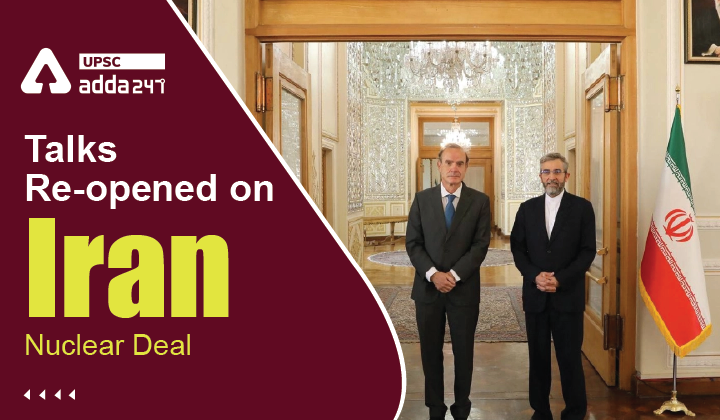Table of Contents
Iran Nuclear Deal UPSC: Relevance
- GS 2: Effect of policies and politics of developed and developing countries on India’s interests, Indian diaspora.
JCPOA UPSC: Context
- Recently, Iran has said that it is awaiting US response to “solutions” discussed with the EU envoy for breaking a stalemate in talks aimed at restoring the 2015 nuclear deal.
Iran nuclear deal news: Key points
- Iran has been engaged in direct negotiations with France, Germany, Britain, Russia and China to revive the nuclear deal. The US has participated indirectly.
- Talks, however, remains stalled for two months due to some sticky points discussed later in this article.
Iran nuclear agreement: Sticky issues
- One of the major stumbling blocks is Tehran’s demand that the US State Department removes Iran’s Islamic Revolutionary Guard Corps from its list of foreign terrorist organisations.
- Washington has so far resisted, claiming that the issue falls outside the scope of the nucleal deal and should not be linked to the discussions.
What is Iran nuclear deal?
- In 2015, P5+1 countries-– the US, UK, France, China, Russia and Germany—signed a nuclear deal with Iran, formally called the Joint Comprehensive Plan of Action (JCPOA) that was acclaimed as the biggest diplomatic achievement of the then US government.
- The original agreement required Iran to send abroad about 98 percent of its enriched uranium and it limited its nuclear capacity, with independent observers monitoring its progress.
- In return, the US removed sanctions that opened Iran up to the world economy.
- The JCPOA, according to international monitors, achieved its goal of curtailing Iran’s nuclear program.
Iran nuclear talks: Annulment of the nuclear deal
- In 2018, Trump administration unilaterally pulled out of the JCPOA in 2018 and imposed a “maximum pressure” sanctions campaign.
- Those sanctions continue to be punishing for Iranians, especially throughout the pandemic, and have severely limited access to medicine and food.
- In 2019, Iran started breaching its side of the agreement.
- Subsequently, its nuclear program has reached more advanced stages. Iran’s stockpile of uranium has expanded, with levels of enrichment much higher than permitted under the 2015 deal.
- At this point, Iran may be able to produce the material for a weapon in less than six weeks. (The JCPOA had put that time at about a year.)
Read current affairs for UPSC





 TSPSC Group 1 Question Paper 2024, Downl...
TSPSC Group 1 Question Paper 2024, Downl...
 TSPSC Group 1 Answer key 2024 Out, Downl...
TSPSC Group 1 Answer key 2024 Out, Downl...
 UPSC Prelims 2024 Question Paper, Downlo...
UPSC Prelims 2024 Question Paper, Downlo...





